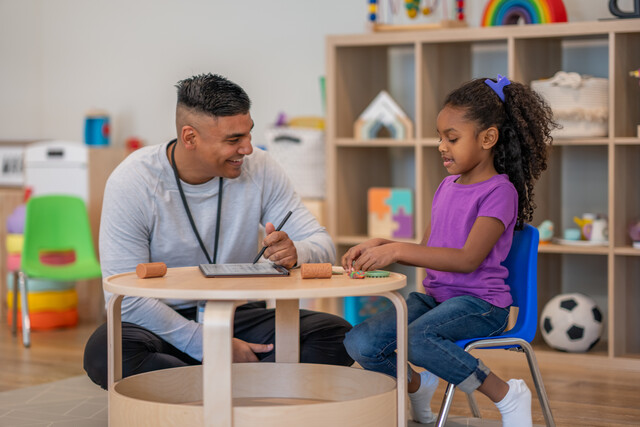For parents, caregivers, and teachers, it can feel daunting to try to prevent the spread of disease in environments where children are perpetually present. However, it is important to be mindful of habits that can accelerate or inhibit the spread of disease, especially at home. By being knowledgeable and intentional, parents can increase the likelihood that their child will maintain good health via prevention. In this lesson, we will discuss the basic components of the infectious process and how parents can structure the environment and teach their children good habits for avoiding disease.
Germs, or microbes, namely viruses and bacteria, are present all around us and are a constant and pervasive factor in our environment. However, not all of these cause disease. Many germs are actually helpful to maintaining good health like bacterial flora in the digestive tract that help the body process food. When a germ does cause disease, it is referred to as a pathogen. Pathogens reach the body and trigger disease via the six part infectious process. This is also referred to as the chain of infection. The six parts are the following.
1. The pathogen exists in the environment. Typical viral pathogens may include rhinovirus that is the cause of the common cold or norovirus that causes gastroenteritis. Typical bacterial pathogens are those that may cause pneumonia, food poisoning, sinusitis meaning ear infections, and eye infections like pinkeye. There are also fungal pathogens. These can cause diseases like athlete's foot, ringworm, and thrush. Finally, less familiar forms of pathogens include prions, a small protein that causes brain disease and damage, and parasites like worms.
At this stage, the best thing that parents and caregivers can do to prevent infection is to maintain environmental cleanliness. This does not mean keeping the house immaculate at all times, but it does mean cleaning often and regularly and using disinfectant cleaners, especially on commonly used surfaces like kitchen countertops, the dining room table, and the floor. If parents do not want to use traditional chemical-based disinfectants or bleach, natural disinfectants include boiling water, vinegar, lemon, and hydrogen peroxide. There are also non-chemical disinfectants available for purchase that contain distilled thyme as their main effective ingredient.
Daycares and childcare centers must follow policies and procedures related to cleanliness, what disinfectants are used, what times of the day commonly used surfaces are cleared of pathogens, such as after mealtimes, and other procedures for cleaning the environment before and after open and closure times. It is important for parents to evaluate and confirm the cleaning and disinfecting policies and procedures of potential placements when going through the process of selecting a daycare or childcare.
2. The second stage of infection is known as the reservoir. In addition to being present in the environment, the pathogen will also need a place in which it can live and survive. Common reservoirs include people, pets, ground surfaces like soil, and water.
3. The third stage of infection is the process by which the pathogen or germ leaves the reservoir, its first step in traveling to a new host to cause infection there. This is known as the "portal of exit." For example, a person who is carrying the rhinovirus may sneeze and produce droplets in the airflow of the sneeze that contain the virus. The sneeze is the portal of exit. Typical ways in which pathogens achieve portal of exit from their reservoir are via a wound that has not yet closed or healed, an airborne discharge from the nose or throat like a sneeze or a cough, feces that are not cleaned properly (see stage 1 of the chain), and other transmission of bodily fluids.
The best way to effectively close down portals of exit and prevent infection from spreading this way is to ensure proper barriers are in place so that the pathogen cannot exit the reservoir. This means thoroughly and cleanly wrapping wounds and covering the mouth and nose when coughing and sneezing. This is also why daycare staff should be wearing gloves while changing diapers of babies and young children, and teaching and practicing complete hygiene routines including hand washing during the toileting routine for children who are no longer in diapers.
It can be difficult to teach young children to properly and consistently cover their mouth and nose while sneezing. Parents can start this process as early as possible by modeling the behavior of holding one's elbow flush against the mouth and nose when coughing and sneezing, even when they are not sick. This way the child will learn this behavior as part of their early imitative repertoire in the first and second years of life. When children do use their hand instead of a sleeve to block the cough or the sneeze, they should be taught to use hand sanitizer or to wash their hands in order to eliminate any pathogens that exited onto their hands. Parents can also coach their children to wash their hands after blowing their nose when they get older and see that they are completing more of these respiratory care behaviors independently.
4. The fourth stage of infection is the process by which the pathogen travels from the portal of exit to the new host. This is called the mode of transmission. This will happen almost instantaneously in the case of direct transmission or may happen at a delay with indirect transmission. Direct transmission happens when the infected host is in contact with or very close to the potential new host. For example, the child who has not yet effectively learned to practice a full sleeve barrier when sneezing may sneeze directly into their parent's face. Indirect transmission happens via a third party, such as a mosquito.
For families with young children, direct transmission can be most effectively prevented by adjusting expectations for physical closeness. For example, coach the young child who has picked up a cold at school to maintain around 24 inches of space between them and the new baby in the home. Parents may need to be conscious of providing special attention to their child in other ways during this time. When it is not realistic or manageable to maintain safe distance to prevent the mode of transmission, parents should increase their efforts to shut down the pathogen at the other stages of infection.
For indirect transmission, this is another area where it is important that proper pest control practices are in place. For example, the family that lives near many tall trees may need to enlist ongoing pest control maintenance in the form of professional trap setting and regular bi-monthly visits to continue prevention of rat infestation. This is also where it can be helpful to discourage smaller pests like mosquitos via environmental repellants like citronella candles when spending extended periods of time outdoors.
5. The fifth stage of infection is the way in which the pathogen successfully enters the new host. This is called the portal of entry. This happens when the new host is penetrated by the pathogen either via a wound or mucous membranes, when the new host inhales the pathogen into their respiratory tract, or when the new host ingests the pathogen. For example, ingestion of a pathogen is typically how food poisoning would be caused.
Parents can teach their child to take many preventive steps to stop the infectious process at this point. These steps are similar to many practices highlighted above, but this is the stage where the person may have the most control in preventing themself from getting sick. Healthy preventive practices at this stage include practicing good first aid like ensuring any broken skin is bandaged even if it is not infected since properly closing off small incisions or wounds will prevent pathogens from entering the body; ensuring the use of protective barriers like making sure daycare staff are using gloves even when changing the diaper of a child who is not sick; using insect repellant applied to the skin in formats that are safe for children; and practicing good hygiene in general.
For young children, two of the best ways to prevent infection at this stage is to teach children about "keeping hands to self" and to wash their hands several times a day.
"Keeping hands to self" is an important skill to learn for respecting social boundaries appropriately but this is also an effective way to stop the infectious process at the portal of entry. This can look like teaching alternative non-physical ways to greet peers and adults in unfamiliar community settings where pathogens are unknown and potentially more likely to cause infection than in the child's familiar home and school environments, such as waving or verbally saying "hi." This can also look like teaching the difference between items that are okay to touch and items that are not okay to touch from a young age. Items that are okay to touch would be toys, books, and other belongings of the child's in their home and classroom. Items that are not okay to touch would include garbage that may have been left behind at the park or playground and pets that belong to another person, as well as wild animals. By teaching these habits early, the parents may increase the likelihood that their child will "look and not touch" in a situation where there is the potential for portal of entry.
6. The sixth and last stage of infection is the new host. At this stage, the pathogen has entered the body but the contraction and severity of the infection will depend on many physiological factors. For example, the infant, elderly person, or person with a chronic illness will have a weaker immune system than an older child or non-elderly adult and thus will be more likely to become sick and also more likely to experience illness more severely. For these people, it is important to prevent and shut down the infectious process at other stages. For older children and adults, it's also important to practice overall good preventive health habits like healthy eating, sleeping, and exercising to strengthen the immune system.
Vaccinations are also critical for the vast majority of the population in shutting down the infectious process at this stage. Additionally, antibiotics should be used wisely to defeat bacterial infections but should always be prescribed by a doctor in conjunction with an overall plan of care in order to decrease the likelihood that bacteria will build up resistance to the antibiotics.
While many of the strategies to prevent and combat infection overlap as demonstrated above, it is important for parents and caregivers to be aware of each stage of the infectious process. This will ensure they are better able to apply these strategies fluently and effectively, and to increase their efforts when other mitigating factors arise. For more information on the infectious process and how it pertains to their individual family unit, parents can reach out to their healthcare provider and team.
























